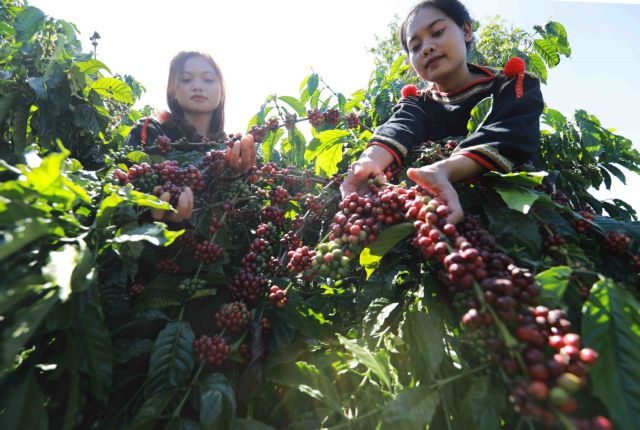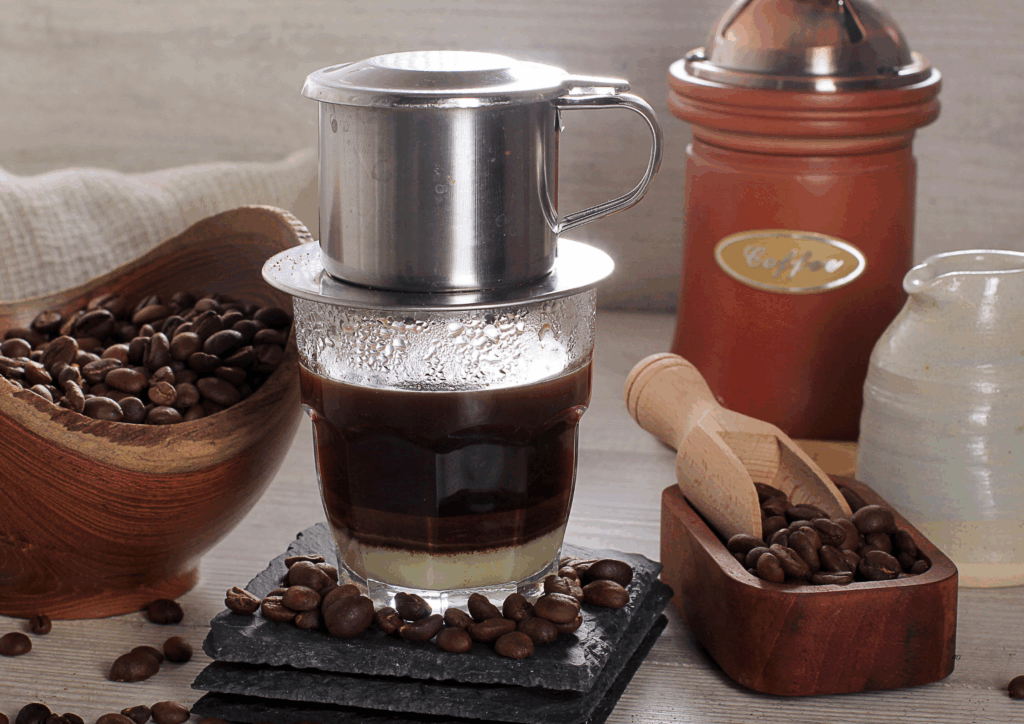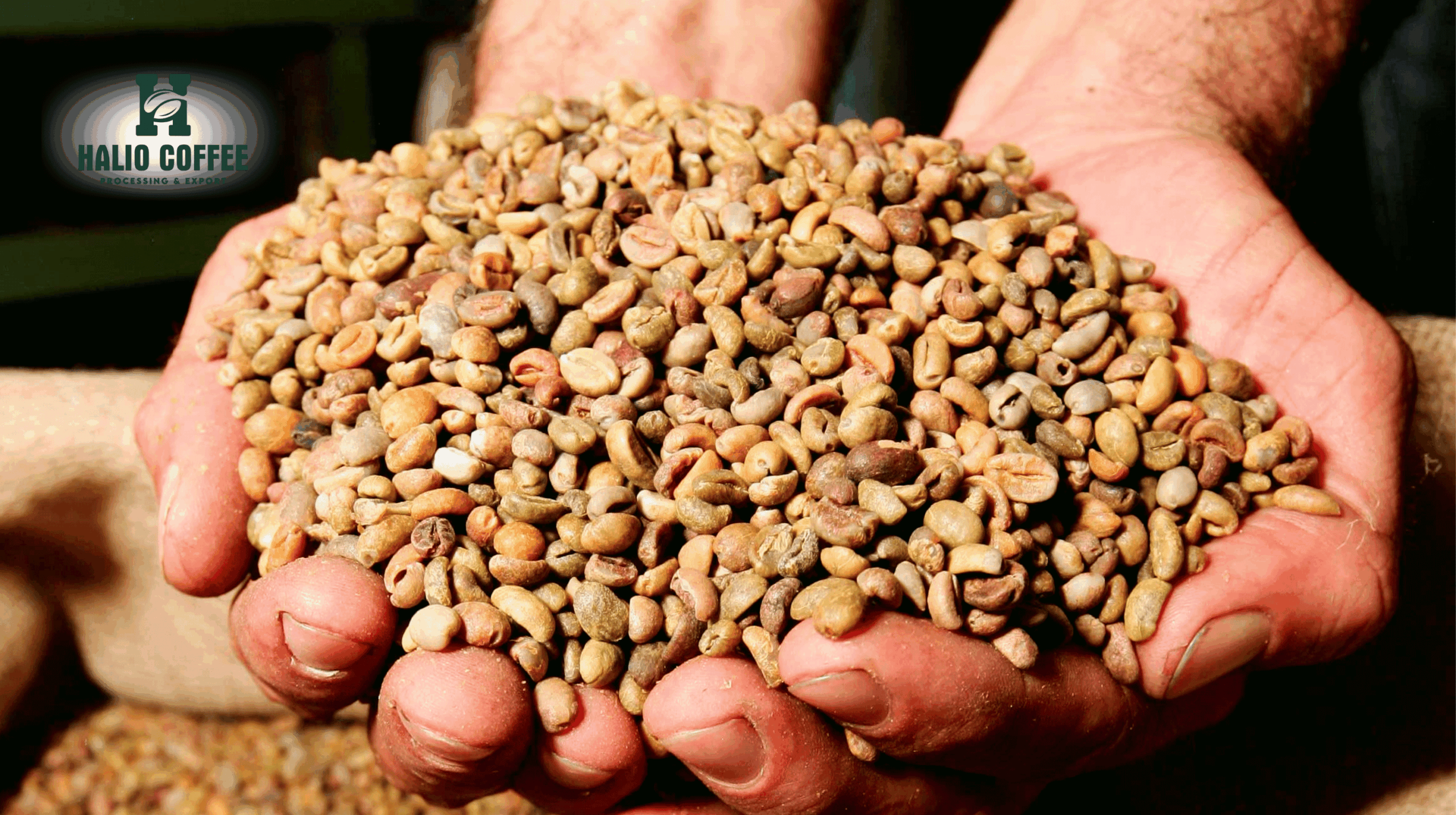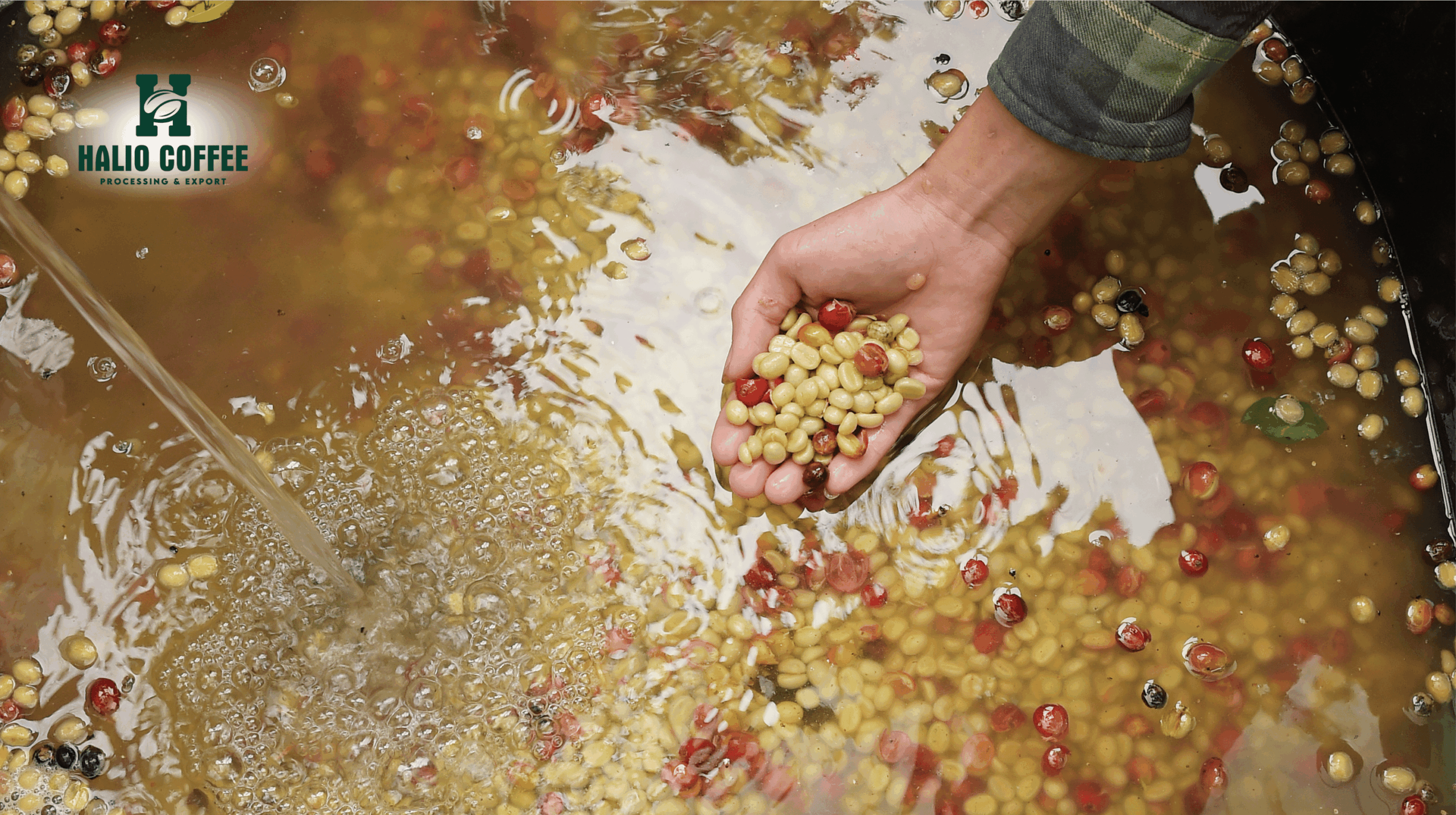Green Arabica Coffee for Roasters: A Comprehensive Guide to Vietnam’s Evolving Landscape
For coffee roasters, green Arabica coffee is more than just a commodity; it’s the very foundation of their artistry, holding the nuanced flavors and complex aromatics that define a truly exceptional cup. While Vietnam has long been recognized as the global powerhouse of Robusta, its burgeoning Arabica sector, particularly from high-altitude regions like Cau Dat in Lam Dong, is now offering a compelling and increasingly diverse range of green Arabica coffee suitable for discerning roasters, coffee manufacturers, and distributors worldwide.
1. The Essence of Green Arabica Coffee for Roasters: Quality & Potential
Green Arabica coffee refers to the unroasted beans of the Coffea Arabica species, meticulously harvested, processed, and prepared for shipment. These beans are the cornerstone of the specialty coffee movement, characterized by inherent qualities that set them apart:
1.1 Inherent Qualities of Arabica Beans
- Complex Flavor Potential: Arabica beans are celebrated for their intricate flavor profiles, which can span a wide spectrum from bright citrus, delicate floral, and tea-like notes to rich chocolate, sweet caramel, and nutty undertones. This complexity stems from their higher sugar and lipid content compared to Robusta.
- Superior Aromatic Development: Upon roasting, Arabica typically develops a much broader, more refined, and pleasant aromatic spectrum, contributing significantly to the final sensory experience.
- Lower Caffeine Content: With approximately 1.5% caffeine, Arabica offers a gentler, more nuanced coffee experience, favored by those seeking flavor depth over an intense caffeine kick.
- Optimal Growing Conditions: Arabica thrives in specific ecological niches—typically high altitudes (800 meters above sea level and higher), consistent rainfall, and moderate temperatures. This explains why regions in Vietnam’s Central Highlands and Northern mountains provide ideal conditions.
- Distinctive Shape: Green Arabica beans are generally oval and larger than Robusta, featuring a characteristic, sinuous central groove.
For roasters, selecting the right green Arabica coffee involves a holistic understanding that extends beyond mere varietal; it necessitates delving into its specific origin, meticulous processing, and inherent quality.
See more:
- Organic Arabica Coffee Bean Supplier
- Single Origin Arabica Coffee Vietnam
- Halio Coffee – Your Trusted Fresh Coffee Distributor of Robusta & Arabica Beans
2. Critical Factors in Sourcing Green Arabica Coffee for Roasters

A roaster’s ultimate goal is to transform raw green Arabica coffee into an extraordinary roasted product. This transformation is heavily influenced by several critical factors that define the bean’s potential and how it will perform in the roast:
2.1 Origin and Terroir: The Fingerprint of Place
The geographical origin, or terroir, profoundly shapes Arabica’s unique flavor profile.
- Specific Growing Regions: In Vietnam, regions like Cau Dat (Lam Dong) are highly regarded for their distinct characteristics, which are a direct result of unique microclimates, specific soil compositions, and prevailing altitudes. For instance, Cau Dat Arabica is often known for its notes of chocolate, nuts, and a pleasant, balanced acidity. Other emerging Vietnamese regions, such as Son La and Dien Bien, are also developing their own recognizable flavor signatures.
- Altitude: Higher altitudes typically correlate with slower coffee cherry maturation. This extended development period allows the beans to accumulate more sugars and organic acids, leading to denser beans and, consequently, more complex, nuanced flavors with a brighter, more refined acidity. Altitude is a fundamental indicator of potential quality for roasters targeting the specialty market.
2.2 Varietal: The Genetic Blueprint
The specific Arabica varietal plays a crucial role in determining the bean’s genetic flavor blueprint and its resilience. Common varietals cultivated in Vietnam include:
- Catimor: A widely planted hybrid varietal, valued for its robust disease resistance and good yields. It generally offers a clean, balanced cup profile, making it a reliable choice.
- Typica & Bourbon: While less prevalent in Vietnam, some smaller, quality-focused farms or specialty producers may cultivate these classic varietals, which are globally recognized for their exceptional cup quality and distinct characteristics.
- Newer Hybrids: Ongoing agricultural research in Vietnam is focused on introducing and developing new varietals that are well-adapted to local conditions while simultaneously aiming for improved cup quality and disease resistance.
2.3 Processing Method: Shaping the Flavor Journey
The method by which coffee cherries are processed after harvest critically influences the final flavor and physical characteristics of the green Arabica coffee. Roasters often seek specific processing methods to achieve desired flavor profiles in their roasted beans.
- Washed (Wet) Process:
- Method: The fruit pulp is mechanically removed, and beans undergo a controlled fermentation in water to break down and remove the remaining mucilage layer. After fermentation, beans are thoroughly washed and then dried.
- Result: This process typically yields a cleaner, brighter, and more acidic cup with distinct flavor clarity, allowing the inherent characteristics of the bean and terroir to shine. It is the most common method for specialty Arabica globally.
- Natural (Dry) Process:
- Method: Whole coffee cherries are dried with the entire fruit intact around the bean, usually on raised beds or patios. Once fully dried, the dried fruit layers are mechanically removed.
- Result: This method often imparts a fuller body, lower acidity, and pronounced fruity, wine-like, or even subtly fermented notes. It is gaining significant popularity for specialty Arabica due to its ability to create unique and complex flavor contributions.
- Honey (Pulped Natural) Process:
- Method: The fruit pulp is removed, similar to the washed process, but a specific portion of the sticky mucilage layer is intentionally left on the bean during the drying phase.
- Result: This process offers a balance between washed and natural methods, typically providing enhanced sweetness, a rounder body, and complex fruit notes, varying based on the amount of mucilage left and drying conditions (“yellow,” “red,” “black” honey).
2.4 Green Bean Quality Metrics: The Roaster’s Technical Checklist
Beyond origin and processing, precise physical quality metrics are paramount for successful and consistent roasting.
- Moisture Content: Crucial for even heat transfer during roasting and preventing detrimental defects like mold growth. An ideal range is 10-12.5%. Beans with moisture content that is too high are prone to mold and inconsistent roasting; too low makes beans brittle and can lead to scorching.
- Water Activity (Aw): Measures the free water available for microbial growth. A lower water activity indicates better stability during storage and a longer shelf life for the green Arabica coffee.
- Defect Count: Determined by rigorous Specialty Coffee Association (SCA) green grading standards. Specialty Arabica must have zero primary defects (e.g., full black beans, full sour beans, large stones, fungal damage) and very few, if any, secondary defects. High defect counts negatively impact flavor, create undesirable odors, and can pose significant challenges during the roasting process.
- Screen Size: Uniform bean size is vital for promoting even heat distribution and consistent roast development within a batch. Roasters often prefer specific screen sizes (e.g., Screen 16-18) for optimal roasting performance.
- Bean Density: Denser beans typically indicate higher quality, slower growth at altitude, and greater flavor potential. They also respond uniquely to heat application during roasting, requiring specific roast profiles.
- Color and Aroma: Fresh green Arabica coffee beans should exhibit a consistent, vibrant green hue. They should also possess a clean, fresh, often nutty, or subtly grassy aroma. Any discoloration (yellowing, browning) or the presence of off-odors (musty, rubbery, sour) indicates potential quality degradation or defects.
2.5 Freshness and Storage: Preserving Potential
Green Arabica coffee is a perishable agricultural product whose inherent flavor potential degrades over time if not handled correctly.
- Harvest Date: Roasters consistently prioritize beans from the most recent harvest (typically within 12 months of the harvest period) to capture their peak flavor potential and ensure optimal roast performance.
- Storage Conditions: Proper storage in climate-controlled warehouses (maintaining stable temperature and humidity levels) and utilizing specialized packaging (such as GrainPro bags or similar oxygen-barrier solutions) are absolutely essential to preserve freshness, prevent quality deterioration, and protect against environmental contaminants. This is where a reliable fresh coffee distributor plays a critical role.
3. Sourcing Green Arabica Coffee from Vietnam: Opportunities & Considerations for Roasters

Vietnam’s Arabica sector is an exciting and rapidly developing frontier for roasters looking to diversify their offerings and explore unique origins. From the heart of Vietnam’s coffee region, Buon Ma Thuot, Dak Lak, on July 26, 2025, we observe:
3.1 Emerging Opportunities for Global Roasters
- Growing Specialty Potential: Vietnamese Arabica, particularly from the highly acclaimed Cau Dat region, is increasingly achieving high scores (80+ SCA points) in cupping evaluations. This consistent performance confirms its strong potential for the global specialty coffee market.
- Unique Flavor Profiles: Roasters can discover green Arabica coffee from Vietnam with distinct and intriguing characteristics that are not commonly found in beans from other origins. This offers exciting new avenues for blend development or for showcasing truly unique single-origin offerings.
- Improving Quality Control & Infrastructure: Vietnamese exporters are actively investing in more sophisticated processing facilities and comprehensive farmer training programs. This concerted effort is leading to a more consistent supply of higher-quality green Arabica coffee.
- Competitive Pricing: While specialty Arabica naturally commands a premium, Vietnamese Arabica can still offer a competitive edge in pricing when compared to some more established specialty origins, presenting an attractive value proposition.
- Strong Commitment to Sustainability: A rapidly growing number of Vietnamese producers are actively engaging in certified sustainable and organic farming practices. This aligns perfectly with the increasing demand from roasters for ethically sourced products and provides a readily available supply from Organic Arabica Coffee Bean Suppliers.
3.2 Challenges and Considerations for Buyers
Despite these promising opportunities, roasters should be aware of certain challenges when sourcing from Vietnam:
- Lower Production Volume (Compared to Robusta): While Arabica production is growing, it remains significantly smaller than Vietnam’s dominant Robusta output. This might limit the immediate availability for very large, consistent orders that some large-scale roasters might require.
- Quality Consistency Across Fragmented Farms: The Vietnamese coffee industry is characterized by numerous smallholder farms. Ensuring highly uniform quality across all these diverse producers can sometimes lead to batch variation. Reputable green Arabica coffee for roasters suppliers implement robust quality checks and centralized processing to mitigate this.
- Vulnerability to Climate Change: Arabica, being a more delicate species, is highly susceptible to the impacts of climate change. Recent prolonged droughts in Vietnam, while primarily affecting Robusta, also pose significant threats to Arabica production, potentially leading to yield reductions (estimated 5-15% for the 2024-2025 crop). Roasters should factor this into their sourcing strategies.
- Evolving Traceability Requirements: New, stringent regulations such as the EU Deforestation Regulation (EUDR), effective December 2024, mandate meticulous farm-level traceability to prove coffee is not linked to deforestation. This is a significant challenge for the Vietnamese industry, requiring substantial investment in data collection and management systems by both producers and exporters.
4. The Purchasing Process: A Roaster’s Essential Checklist

When embarking on the process of purchasing green Arabica coffee from a supplier, roasters should adhere to a structured and rigorous approach to ensure optimal outcomes:
- Define Your Exact Needs: Clearly specify your desired flavor profile, any required certifications (e.g., organic for an Organic Arabica Coffee Bean Supplier), the precise quantity needed, and your budget parameters.
- Conduct Thorough Supplier Due Diligence: Research reputable importers or direct-trade suppliers who specialize in green Arabica coffee from Vietnam. Inquire about their specific sourcing practices, their internal quality control protocols, and their demonstrated commitment to transparency throughout their supply chain.
- Request Comprehensive Samples: Always request both green bean samples for physical inspection (e.g., visual appearance, moisture) and, crucially, roasted samples for cupping. Conduct blind cuppings internally to objectively evaluate the coffee’s sensory attributes against your specific quality standards and preferences.
- Evaluate Quality and Price Holistically: Compare the cupping results from your samples, assess the physical quality of the green beans, and then evaluate the pricing against current market trends for similar quality profiles.
- Negotiate Detailed Terms: Engage in a thorough discussion regarding the volume of purchase, the final price, flexible payment terms, precise delivery schedules, and any specific contractual requirements you may have (e.g., specific storage conditions, preferred packaging type like GrainPro bags).
- Consider Pre-Shipment Inspection (Recommended for Volume): For larger volume purchases, it is highly recommended to engage an independent third-party inspection agency to verify both the quality and quantity of the green Arabica coffee at the origin before it is loaded for shipment.
- Manage Logistics & Import Procedures: Coordinate closely with your chosen supplier on all aspects of shipping logistics, ensuring all necessary customs clearance procedures are handled efficiently, and import duties are correctly accounted for. A reliable fresh coffee distributor or export partner will be invaluable here.
- Conduct Post-Arrival Quality Check: Upon receiving the shipment at your facility, it is critical to perform another thorough physical inspection of the green Arabica coffee and conduct a final cupping session. This verifies that the delivered coffee fully matches the initial samples and all specifications outlined in the contract.
Conclusion
The market for green Arabica coffee from Vietnam represents an exciting and expanding frontier for roasters globally. By actively understanding the unique terroir, diverse varietals, and meticulous processing methods employed in regions like Cau Dat, roasters gain access to a truly distinct and increasingly high-quality selection of beans. Strategically partnering with reputable suppliers, especially those focused on sustainability and serving as Organic Arabica Coffee Bean Suppliers, is absolutely key to successfully navigating this dynamic market. As Vietnam continues its dedicated investment in elevating quality and enhancing traceability throughout its coffee sector, its green Arabica coffee will undoubtedly play an increasingly prominent and valued role in the world’s specialty coffee scene, offering roasters an ever-expanding and rich palette of flavors for their creative endeavors.
- Coffee Prices Today, October 7th: Quiet Trading as Market Awaits US-Brazil Tariff Talks
- Coffee Growing Regions: A Global Tapestry of Terroir and Flavor, with a Focus on Vietnam’s Evolving Landscape
- Vietnamese Arabica Green Coffee Wholesale: Opportunities for Producers, Distributors, and Roasters
- A Consultant’s Master Guide to Communication with Vietnamese Suppliers
- Mastering the Request for Quotation (RFQ) for Green Coffee







